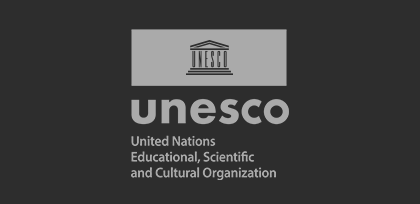OWSD Nigeria National Chapter Presents "Chemical Leaching By Plastics: Why You Should Care"
November 03, 2020
OWSD Nigeria National Chapter University of Port Harcourt Branch series of scientific communications: Gloria Ukalina Obuzor on Chemical Leaching By Plastics: Why You Should Care
CHEMICAL LEACHING BY PLASTICS: WHY YOU SHOULD CARE
By
Professor Gloria Ukalina Obuzor
ABSTRACT
Plastics are polymeric materials used daily in various homes around the world due to their unique properties of being lightweight, strong, durable, corrosion-resistant materials, with high thermal and electrical insulation properties resulting in it being the most used material for food and liquid packaging. However, they pose health hazards or risk by their leaching of various additives that were used in their production into food and the environment. Studies have shown plastics to leach antimony trioxide a toxic metalloid; estrogen-mimicking additive chemicals dangerous to fetuses and juveniles; bisphenol A (BHA), bisphenol S (BHS) and di-(2-ethylhexyl) phthalate (DEHP) potent endocrine disrupting chemicals; styrene, lead, dioxins, mercury, and cadmium suspected carcinogens into food and water; on heating and excessive usage. Despite the health hazards implications of plastics, plastics could be safe if the right coded number of plastic is used properly by homemakers.
INTRODUCTION
Plastics (in our houses, walls, plumbing pipes, bottles, cans, rugs, dental fillings, eyeglass lenses, phones, cars, garden mulch and much more ) are derived from natural, organic materials such as cellulose, coal, natural gas, salt and, crude oil. The crucial compound for the production of plastics is the hydrocarbon naphtha which is obtained from the fractional distillation of crude oil (a complex mixture of thousands of compounds). Naphtha is cracked to give the monomers ethylene, propylene and butylene. These monomers are used to produce plastics by polymerization and polycondensation. Both types of production require specific catalysts and VARIOUS ADDITIVES such as antioxidants, ultraviolet (UV) stabilizers or plasticizers which are necessary to protect plastic from UV, mechanical or oxidative deterioration or to increase softness or to improve the overall appearance or quality of the plastic product. These various additives eventually do leach out.
Plastic pollution causes harm to humans, animals and plants through toxic pollutants. It can take hundreds or even thousands of years for plastic to break down so the environmental damage is long-lasting. It affects all organisms in the food chain from tiny species like plankton through to whales.
Another class of endocrine disruptor called phthalates is also present in plastic products containing PVC. Phthalates are used to soften plastic and can be found in toys, deodorants and shampoos, shower curtains, raincoats, food packaging and a myriad of other products. Phthalates are loosely bound to plastic and easily absorbed into food, beverages and saliva, and like BPA, have been commonly detected in our bodies. Most concern is the effect phthalates have on reproductive health in males. Exposure in fetuses has been linked to the malformation of the male reproductive system.
The dangers from plastic are not just from ingestion. During the industrial manufacturing of plastic, all manner of toxic chemicals are released, many of which are carcinogenic or neurotoxic. These would include vinyl chloride, from PVC; dioxins and benzene, from polystyrene; and formaldehyde, from polycarbonates. Many of these toxins are known as POPs, or persistent organic pollutants. They are highly toxic, and like plastic, they don't easily go away.
There are many different types of plastics, and they can be grouped into two main polymer families:
- Thermoplastics (which soften on heating and then harden again on cooling).
- Thermosets (which never soften once they have been molded).
Table 1. The two main polymer families
|
Examples of Thermoplastics |
Examples of Thermosets |
|
Acrylonitrile butadiene styrene (ABS), Polycarbonate (PC) Polyethylene (PE) Polyethylene terephthalate (PET) Polytetrafluoroethylene (PTFE) Polyvinyl chloride (PVC) Polymethyl methacrylate (PMMA) Polypropylene (PP) Polystyrene (PS) Expanded Polystyrene (EPS) |
Epoxide (EP) Phenol-formaldehyde (PF) Polyurethane (PUR) Unsaturated polyester resins (UP)
|
SEVEN PLASTIC TYPES THAT YOU NEED TO KNOW
Plastic which takes thousands of years to decay is not as simple as most people think as they come in many variations, different combinations of resins and polymers creating plastics with different properties, and different types of plastic present different dangers. Each one of them is different from the others, some are reusable and others produce hazardous material after several uses. Some are easily recyclable while others are not; despite this attempt, not more than 10 percent of plastic is recycled making most to end up in landfills where they exist for several years. Plastics in landfills leach chemical toxins which eventually entered the food chain, threatening human health. As a consumer, are you aware that each plastic is coded with a number to indicate the type of resin used in its production? The code number (check back or bottom) indicates which plastic should be avoided and what number holds the biggest chance of damaging the environment.
Table 2. Code numbers of plastics
|
Resin Identification number |
Resin |
Resin Identification Code – Option A |
Resin Identification Code – Option B |
|
1 |
Poly(ethylene terephthalate) |
(1) PETE |
(01) PET |
|
2 |
High density polyethylene |
(2) HDPE |
(02) PE - HD |
|
3 |
Poly(vinyl chloride) |
(3) V |
(03) PVC |
|
4 |
Low density polyethylene |
(4) LDPE |
(04) PE - LD |
|
5 |
Polypropylene |
(5) PP |
(05) PP |
|
6 |
Polystyrene |
(6) PS |
(06) PS |
|
7 |
Other resins |
(7) other |
(07) 0 |
1. Polyethylene Terephthalate (PET or PETE or Polyester)
Polyethylene terephthalate (PET) is commonly used in commercially sold water bottles, soft drink bottles, condiment bottles and drink packaging purposes due to its strong ability to prevent oxygen from getting in and spoiling the product inside. It also helps to keep the carbon dioxide in carbonated drinks from getting out. PET is recyclable but in the presence of heat it can leach antimony trioxide a toxic metalloid, into food and beverages, which can cause vomiting, diarrhea and stomach ulcers. The longer a liquid is left in a PET container the greater the potential for the release of the antimony. Warm temperatures inside cars, garages, and enclosed storage could also increase the release of antimony trioxide. Some studies have shown up to 100 times the amount of antimony in bottled water than in clean groundwater. The longer the bottle is on the shelf or exposed to heat or sunshine, the more antimony is likely to have leached into the product.
2 – High-Density Polyethylene (HDPE)
High density polyethylene (HDPE) is special compared to the other types of plastic, HDPE has long virtually unbranched polymer chains used as the grocery bag, opaque milk, cereal box liners, juice container, shampoo bottles, and medicine bottle. Not only recyclable, HDPE is relatively more stable than PET. It is considered as a safer option for food and drinks use, although some studies have shown that it can leach estrogen-mimicking additive chemicals dangerous to fetuses, juveniles and disrupt human’s hormonal system when exposed to ultraviolet light.
3 – Polyvinyl Chloride (PVC)
Polyvinyl Chloride (PVC) one of the most toxic plastic is typically used in toys, blister wrap, cling wrap, detergent bottles, loose-leaf binders, blood bags, medical tubing’s, plumbing pipes, clear food packaging, plastic children's toys, tablecloths, vinyl flooring, children's play mats, ceiling boards, and blister packs (such as for medicines). It’s used to be the second most widely used plastic resin in the world (after polyethylene) however; its manufacture and disposal process has been declared the cause of serious health risks and environmental pollution issues. Its use may leach a variety of toxic chemicals such as bisphenol A (BPA also called 4,4'-(propane-2,2-diyl)diphenol), phthalates, lead, dioxins, mercury, and cadmium. Several of the chemicals mentioned may cause cancer; it could also cause allergic symptoms in children and disrupt the human’s hormonal system especially the phthalate called di(2- ethylhexyl) phthalate (DEHP) which can cause male traits to become more feminized. DEHP has been replaced with another chemical called diisononyl phthalate (DINP) which can lead to growth of tumors in the liver, spleen and kidneys of animals and can affect how unborn babies develop. It may also cause cancer in humans. PVC is also rarely accepted by recycling programs and this is why it is best avoided at all cost.
4 – Low-Density Polyethylene (LDPE)










































